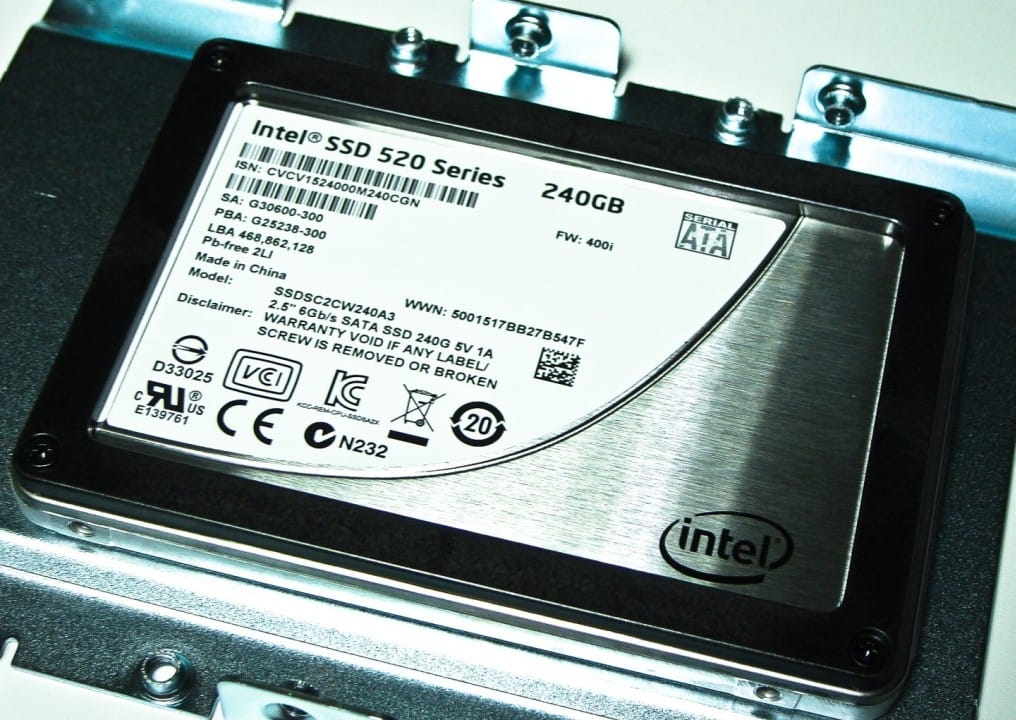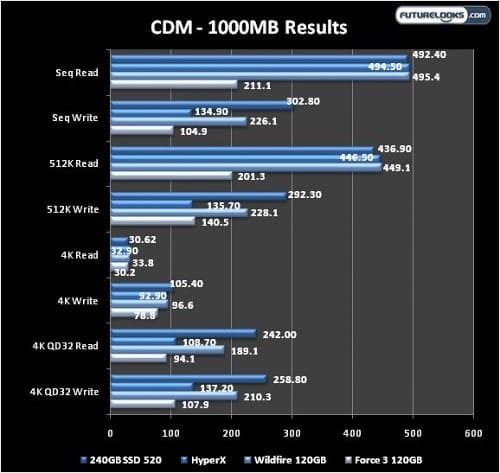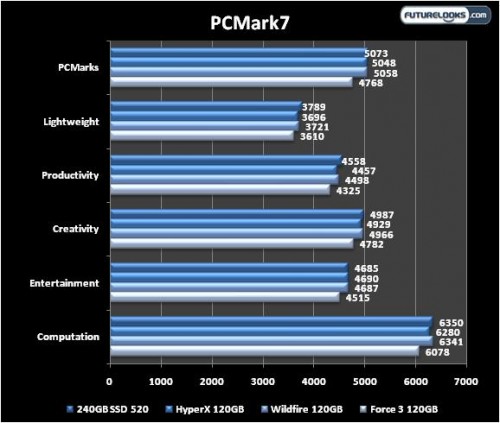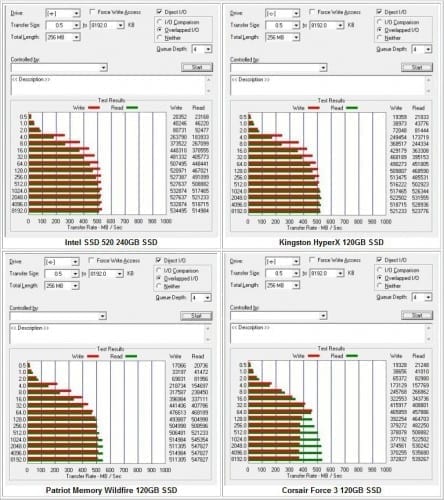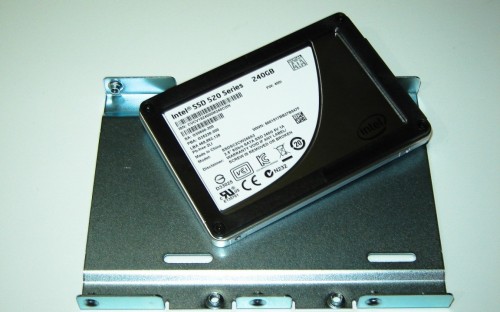CrystalDiskMark
CDM is pretty brutal when it comes to compression tests. Here, we see Intel’s SSD 520 performance landing in place just ahead of the record holding Patriot Memory Wildfire 120GB SSD. And of course, you can see how the more budget oriented asynchronous Corsair Force 3 SSD compares to the above synchronous SSDs.
The Intel SSD 520 completely rocks write performance even under heavy compression. Even though this is a consumer based SSD, one can only imagine what the enterprise series can do. The only word that comes to mind is “impressive”. Let’s see how this write performance handles something a little more real world like PCMark7.
PCMark7
For this test, PCMark7 was executed three times using default settings to get an average score. (Yes, that’s a lot of benchmarks testing four SSDs.) This is about as good a real world reveal as any because the SSDs are the only large variable that affects the test system’s performance.
The previous benchmark results between all the SSDs paints a very similar picture in terms of system performance. Still, the overall average shows an advantage in favor of the Intel 520. The system was far more consistent during testing as well whereas the rest provided larger varied results. Granted, this isn’t quite enough performance to warrant replacing your current synchronous SSD unless you need the 240GB capacity.
ATTO
ATTO typically helps any SSD produce some impressive numbers compared to platter hard drives. If nothing else, this may give us a glimpse in to their enterprise offerings as well. Let’s have a look at the results for the four SSDs in a overlapped IO test. Remember, these drives are weighted down with plenty of data.
You can see why the SSDs influenced the previous PCMark7 benchmarks. Much of the overall system performance comes from 4K data block read/write capability. Here, the HyperX and Wildfire fight for second while the SSD 520 hammers out some better 4K scores. It’s roughly 13MB/s faster than the HyperX and Wildfire on write and 10 MB/s on the read.
Final Thoughts
The Intel SSD 520 breaks through setting new SATA6 performance standards due to three important features: High quality synchronous NAND, a more mature controller and more polished firmware. It’s obvious Intel engineers made the right choice holding back Cherryville so they could tune everything right down to the firmware. This allows consumers to be able to plug and play with little to no fuss.
In these paycheck strained days, cost and capacity are still a very big deal to consumers especially now. But with hard drive prices still high due to the flooding in Thailand, SSDs become a bit more attractive. When comparing performance and price to similar SSDs, there’s no doubt the 240GB SSD 520 is super fast yet is also about $30 more than the closest comparable predator. For those on the hunt, one should also consider that the SSD 520 series’ 5 year warranty and the front of pack performance are also part of the premium.
If you’re still on the fence for various cost or capacity reasons, Intel’s new 20nm NAND SSD technology will be arriving next year. Engineers recently successfully developed 128GB NAND on a single chip. That means stacking enough MLC NAND to produce larger than 1TB capacity SSDs without much of an increase cost. Intel has also openly challenged the industry to join them so hopefully this creates a bit of a price war that will see pricing and capacity become more acceptable as early as 2013. Cherryville performance with higher capacity all at the same price is very attractive indeed.
Today, the Intel SSD 520 series will dramatically improve complete system performance making Cherryville SSD technology the right choice. While current pricing continues to hold the SSD market back, Cherryville is deserving of our esteemed Editor’s Choice award for simply being best of the bunch in the current market.
Pros
- Fastest SATA6 SSD for consumers
- “End to End” 256bit AES (Advanced Encryption Standard)
- Great overall performance
- SandForce controller polished firmware
Cons
- Still a costly upgrade for regular consumers
Overall Rating: 9. 0 / 10.0

Help Us Improve Our Reviews By Leaving a Comment Below!

